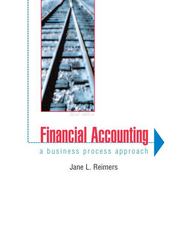
a. Compute net operating assets (NOA) and net nonoperating obligations (NNO) for 2016. Note that the
company's NNO is negative because cash exceeds debt.
b. Compute net operating profit after tax (NOPAT) for 2016 assuming a federal and state statutory tax
rate of 37%.
c. Use the parsimonious forecast method, as shown in the Analysis Insight box and illustrated in Exhibit
13.2, to forecast sales, NOPAT, and NOA for 2017 through 2020 using the following assumptions
Forecast the terminal period value assuming a 1% terminal period growth and using the NOPM and
NOAT assumptions above.
d. Estimate the value of a share of Nike's common stock using the discounted cash flow (DCF) model as
of May 31, 2016; assume a discount rate (WACC) of 6.3% and common shares outstanding of 1,682
million.
e. Nike's stock closed at $56.99 on July 21, 2016, the date the Form 10-K was filed with the SEC. How
does your valuation estimate compare with this closing price? What do you believe are some reasons
for the difference? What investment decision is suggested from your results?
P13-21. Forecasting with Parsimonious Method and Estimating Share Value Using the DCF Model Following are the income statement and balance sheet for Nike Inc. NIKE INC. Consolidated Income Statement May 31, May 31, For Year Ended ($ millions) 2016 2015 Revenues . .. $32,376$30,601 Cost of sales. . . 17,405 16,534 Gross profit. . .... 14,971 14,067 Demand creation expense 3,278 3,213 Operating overhead expense . . . . 7,191 6,679 Total selling and administrative expense 10,4699,892 Interest expense (income), net . ... 19 28 Other (income) expense, net . (140) (58) Income before income taxes . . 4,6234,205 Income tax expense . . . .. 863 932 Net income .. . . .. $ 3,760 $ 3,273 continuedMay 31, May 31, $ millions 2016 2015 Current assets Cash and equivalents. . $ 3,138 $ 3,852 Short-term investments 2,3192,072 Accounts receivable, net 3,2413,358 Inventories . .. 4,8384,337 Prepaid expenses and other current assets. 1,489 1,968 Total current assets 15,025 15,587 Property, plant and equipment, net 3,5203,011 Identifiable intangible assets, net. 281 281 Goodwill . 131 131 Deferred income taxes and other assets 2,439 2,587 Total assets. . . . $21,396 $21,597 Current liabilities Current portion of long-term debt $ 44 $ 107 Notes payable 174 Accounts payable. 2,191 2, 131 Accrued liabilities 3,037 3,949 Income taxes payable 85 71 Total current liabilities. 5,358 6,332 Long-term debt 2,010 1,079 Deferred income taxes and other liabilities 1,770 1,479 Total liabilities 9,138 8,890 Shareholders' equity Class A convertible common stock . 00 Class B common stock 33 Capital in excess of stated value . 7,786 6,773 Accumulated other comprehensive income. 318 1,246 Retained earnings 4,151 4,685 Total shareholders' equity . 12,258 12,707 Total liabilities and shareholders' equity. $21,396 $21,597Required a. Compute net operating assets (NOA) and net nonoperating obligations (NNO) for 2016. Note that the company's NNO is negative because cash exceeds debt. b. Compute net operating profit after tax (NOPAT) for 2016 assuming a federal and state statutory tax rate of 37%. c. Use the parsimonious forecast method, as shown in the Analysis Insight box and illustrated in Exhibit 13.2, to forecast sales, NOPAT, and NOA for 2017 through 2020 using the following assumptions. Sales growth. ..... 6% Net operating profit margin (NOPM). . . . .. . . . . 2016 ratios rounded to three decimal places Net operating asset turnover (NOAT), year-end. .... 2016 ratios rounded to three decimal places Forecast the terminal period value assuming a 1% terminal period growth and using the NOPM and NOAT assumptions above. d. Estimate the value of a share of Nike's common stock using the discounted cash flow (DCF) model as of May 31, 2016; assume a discount rate (WACC) of 6.3% and common shares outstanding of 1,682 million. e. Nike's stock closed at $56.99 on July 21, 2016, the date the Form 10-K was filed with the SEC. How does your valuation estimate compare with this closing price? What do you believe are some reasons for the difference? What investment decision is suggested from your results










